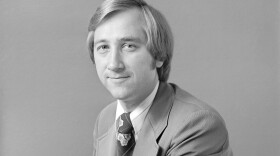Last time, we talked about the life of Frank Sinatra. Nevada in general and Las Vegas in particular were an important part of his life.
He made his film debut in Las Vegas Nights, an otherwise forgettable movie that came out in 1941. He was in it only briefly as a vocalist with Tommy Dorsey, singing “I’ll Never Smile Again.” And when his career was in the doldrums, he made his debut at the Desert Inn on September 4, 1951. He said, “For six bucks you got a filet mignon dinner and me.” He didn’t actually wow the crowd the way he would later. That came when he made the Sands his second home. The Sands had opened in December 1952. The boss, especially for entertainment, was Jack Entratter, a veteran of the Copacabana in New York City. The Copa connection led not just to the entertainment venue being the Copa Room. It also meant that a lot of big name entertainers immediately had a tie to the Sands. Sinatra debuted there in October 1953. Over the next decade and a half, he would appear there regularly, and even be licensed as a part-owner. He was close and loyal to Entratter, who had stood by him during the toughest times. And Mike Weatherford, the longtime Review-Journal entertainment writer, put it best: the Sands became his personal playground.
When he was in Hollywood, Sinatra would hang out with friends like Humphrey Bogart and Lauren Bacall. The group became known as the Rat Pack. The origins of the name are murky. Supposedly Bacall pinned it on them after a long night of debauchery led to a long day of hangovers. They also were known as the Clan, as in a family, but the name had other meanings that didn’t exactly go over well.
Whatever happened, after Bogart died, Sinatra was the undisputed leader of the group. The five key members were Sinatra, Dean Martin, Sammy Davis Junior, Joey Bishop, and Peter Lawford. In 1960, they were coming to Las Vegas to film Oceans Eleven. This gave Sands publicist Al Freeman an idea. Since world leaders Dwight Eisenhower and Nikita Khruschev were supposed to hold a summit later that year, why not a summit of the world’s entertainment leaders? So it was advertised as the Summit at the Sands. During the filming of Oceans Eleven in January and February, the five entertainers would rotate in the Copa Room at the Sands. Instead, they wound up doing the shows together, and it became an unprecedented entertainment event. Hollywood stars visited—Lucille Ball, Jack Benny, Bob Hope. A politician showed up: Senator John Fitzgerald Kennedy of Massachusetts, a candidate for president. That’s when and where he appears to have met Judith Campbell, who became his lover. She also was close to Chicago mob boss Sam Giancana … in the same way.
The Summit at the Sands was supposed to last three weeks. It went on for five weeks. The shows continued afterward in the Sands lounge and in the private suites. Oceans Eleven came out later in the year. The Rat Pack would make a couple more films, but Sinatra and Lawford would have a falling-out, and the group would never be the same. More on that, and on the Chairman of the Board, next time.
Nevada Yesterdays is written by Associate Professor Michael Green of UNLV, and narrated by former Senator Richard Bryan. Supported by Nevada Humanities









